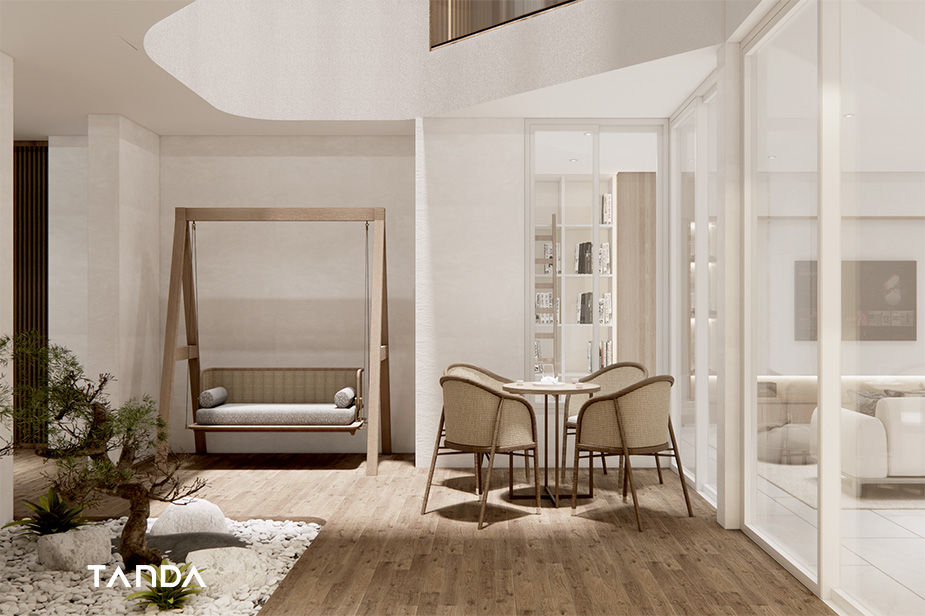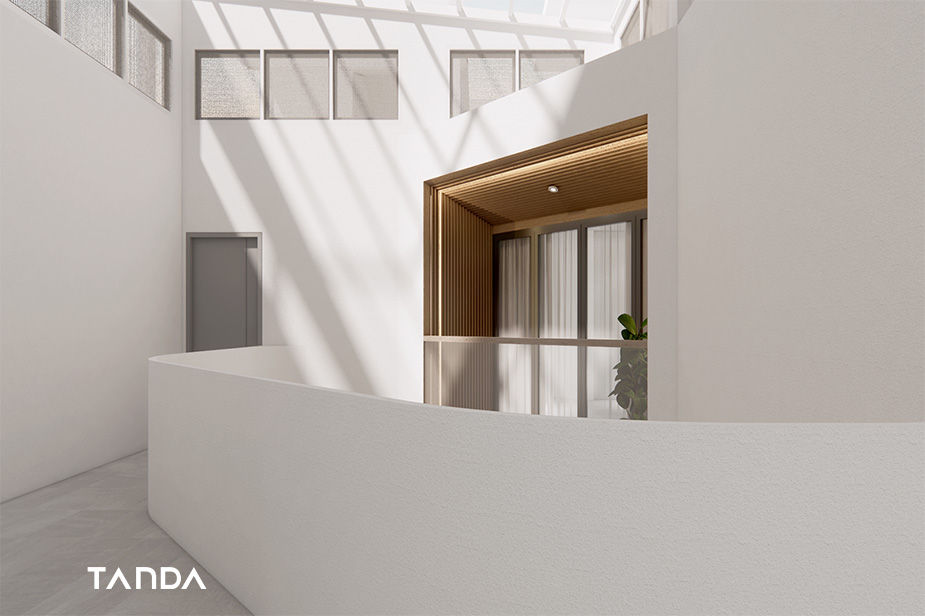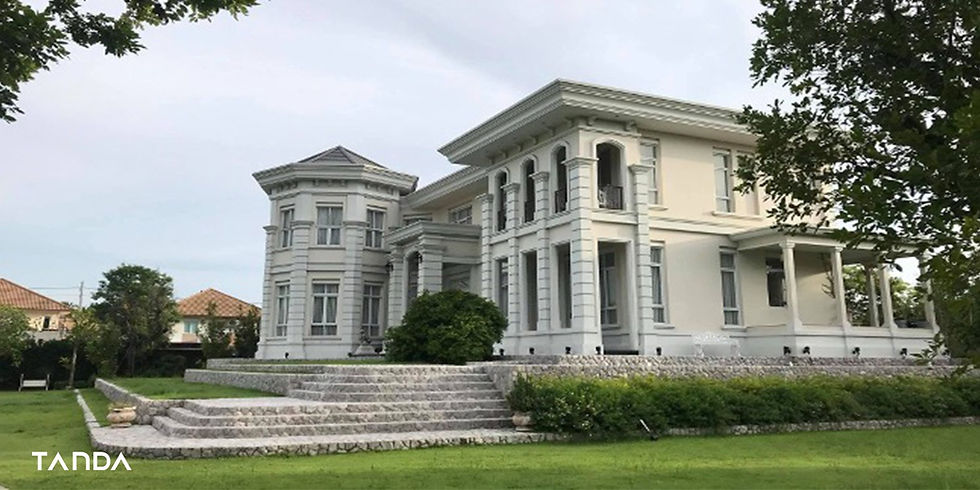Stylish home design meets green living.
- Admin Tanda
- Aug 7
- 5 min read
Updated: Aug 8

Energy conservation is becoming more important and more personal every day at home, at work, and in everyday life. Using energy wisely not only helps cut down costs, but also protects the environment and reduces the impact of climate change.
Small habit changes or switching to energy-saving technology can make a surprisingly big difference. One of the most effective ways is through energy-efficient home design: maximizing natural light, ensuring good ventilation, choosing materials with thermal insulation, and using renewable energy like solar panels. Let’s save energy today for a more sustainable tomorrow!
Energy-Efficient Homes for Sustainable Living.
An energy-efficient home is designed to use energy wisely and minimize unnecessary loss. That includes features like smart orientation to make the most of natural light, effective ventilation, and insulation that reduces the need for constant cooling or heating.
What sets energy-efficient homes apart from typical styles—like minimal, cozy, tropical, or Korean-inspired designs—is the careful attention to detail in every aspect: from construction materials and space planning to the systems used throughout the house. These elements work together to reduce energy consumption and cut long-term costs, making it a great choice for anyone looking for a home that’s not only beautiful and comfortable, but also environmentally friendly.

What Makes an Energy-Efficient Home? Let’s Clear Things Up
Before designing an energy-efficient home, it’s important to understand the key factors that help reduce energy usage effectively. It's not just about looking good—it’s also about creating a comfortable space that saves money in the long run. Here are some essential design principles:
1. Orient the House Properly
Proper orientation helps reduce heat and maximize natural light. Bedrooms, for example, should face east to catch the morning sun, while living areas can be placed facing north or northwest to avoid the afternoon heat. A well-oriented home can significantly cut down on air conditioning and lighting costs.
2. Optimize Natural Light with Openings
Windows and doors should be positioned to bring in just the right amount of daylight. This reduces the need for artificial lighting during the day. Use appropriately sized windows with light-filtering film or curtains to manage sunlight and heat. Good openings also improve ventilation, keeping the home cool naturally.
3. Install Thermal Insulation
Insulation especially in the roof and walls—helps regulate indoor temperatures by blocking external heat. Quality insulation lowers the need for air conditioning and helps keep the house warm during colder months, leading to long-term energy savings.
4. Design for Cross Ventilation
Properly placed air vents or openings help promote natural airflow, reduce heat buildup, and keep indoor spaces fresh. Cross ventilation (with openings on opposite sides) is a simple but effective way to reduce reliance on fans or air conditioners.
5. Use Natural and Eco-Friendly Materials
Choose materials that are environmentally friendly and help reduce heat—like wood, terracotta tiles, or recycled materials. These not only keep the house cooler but are often more durable and easier to maintain, especially when paired with smart design choices.
6. Incorporate Alternative Energy Sources
Modern energy-efficient homes often include solar panels or solar water heating systems. These reduce dependence on external power sources and help lower electricity bills, while promoting clean, renewable energy.
7. Add Green Spaces
Trees and greenery around the home don’t just beautify the space—they filter the air and lower surrounding temperatures. Large trees can provide shade and help cool the house naturally. Gardens also promote relaxation and enhance the overall living environment.

5 Energy-Efficient Home Ideas for Hot Climates
When it comes to homes in hot and humid regions, energy-efficient design means adapting to the local climate. Here are five home ideas that not only look great but also help reduce energy use—perfect for living in tropical countries like Thailand.
1. Elevated Homes with Open Under-space
Raised homes allow air to flow freely underneath, reducing heat buildup and keeping the living space naturally cooler. This design also helps protect against flooding during heavy rains—ideal for Thailand’s tropical weather. It’s a practical blend of comfort and safety.
2. Steep Gable or Hip Roofs
Gable and hip roofs with a steep pitch allow hot air to rise and escape easily, lowering indoor temperatures. These roof types also handle heavy rain well, letting water drain quickly and minimizing leakage. Plus, they create a breezy, open feel inside the house.
3. Open-Plan Layouts
An open-plan layout improves airflow throughout the home by minimizing interior walls. This helps release heat and humidity, reducing the need for fans or air conditioning. It also suits the Thai lifestyle—open, airy, and connected—while saving energy and enhancing comfort.
4. Light-Colored Roofs to Reflect Heat
Using light-colored roofing materials—like white or pale gray—helps reflect sunlight and reduces heat absorption. With less heat entering through the roof, the indoor temperature stays cooler, lowering air conditioning use and electricity bills throughout the day.
5. Nature-Surrounded Homes
Surrounding your home with trees and greenery helps block direct sunlight and keeps the surroundings cooler. Plants also purify the air and add humidity, making the space more comfortable. Garden homes are perfect for nature lovers who want relaxation and energy savings in one.

How to Build an Energy-Efficient Home: For the Planet and a Better Life
Building an energy-efficient home isn’t just about saving on utility bills it’s also
a way to reduce environmental impact and improve the quality of life for everyone who lives there. It starts with thoughtful planning and using design techniques that optimize energy use and harmonize with the natural surroundings.
Plan the Home’s Orientation
Begin by positioning the house to take advantage of wind flow and sunlight. Avoid placing frequently used rooms in direct sunlight, especially during the hottest parts of the day. Instead, place living spaces in cooler orientations to keep the house naturally cooler, reducing the need for air conditioning and cutting energy use significantly.
Work with an Architect or Designer
Consulting with a design professional helps tailor the home to your needs and local climate. Experts can recommend energy-saving techniques such as the right materials, smart layouts, and effective ventilation systems. They can also advise on installing renewable energy solutions. Working with a pro helps prevent costly mistakes and ensures your home is truly energy efficient.
Choose Energy-Labeled Materials
Use certified energy-efficient materials like thermal insulation or heat-reflective glass to help block external heat. This keeps the home cooler naturally. Choosing light-colored exterior paints also reflects heat and reduces the load on air conditioning—leading to long-term savings.
Install Renewable Energy Systems
Make your home even greener by installing solar panels or rooftop solar water heaters. These systems generate electricity from the sun, reducing reliance on the grid and lowering your electricity bills. Especially in sunny countries like Thailand, solar energy can be used year-round—and any surplus electricity can even be sold back to the grid.
Monitor Energy Usage Regularly
Once the home is built, continuously monitoring your energy usage helps you identify areas of waste like overused appliances or inefficient cooling systems. Using smart energy monitoring tools allows for real-time tracking and timely adjustments, helping your home stay energy efficient and sustainable over the long term.

In Summary
An energy-efficient home is thoughtfully designed to use energy wisely by aligning with natural sunlight and airflow, using heat-resistant construction materials, and installing insulation and ventilation systems that promote air circulation.
Incorporating renewable energy technologies like solar panels, along with adding greenery around the home, also helps reduce heat buildup and lower long-term energy costs while making the home more comfortable and sustainable.
If you’re looking for a home that balances smart design with energy efficiency and environmental care, Tanda Design Studio is here to help. We offer full-service architectural design focused on quality living and real energy savings.
Let’s start building your dream energy-efficient home together!







